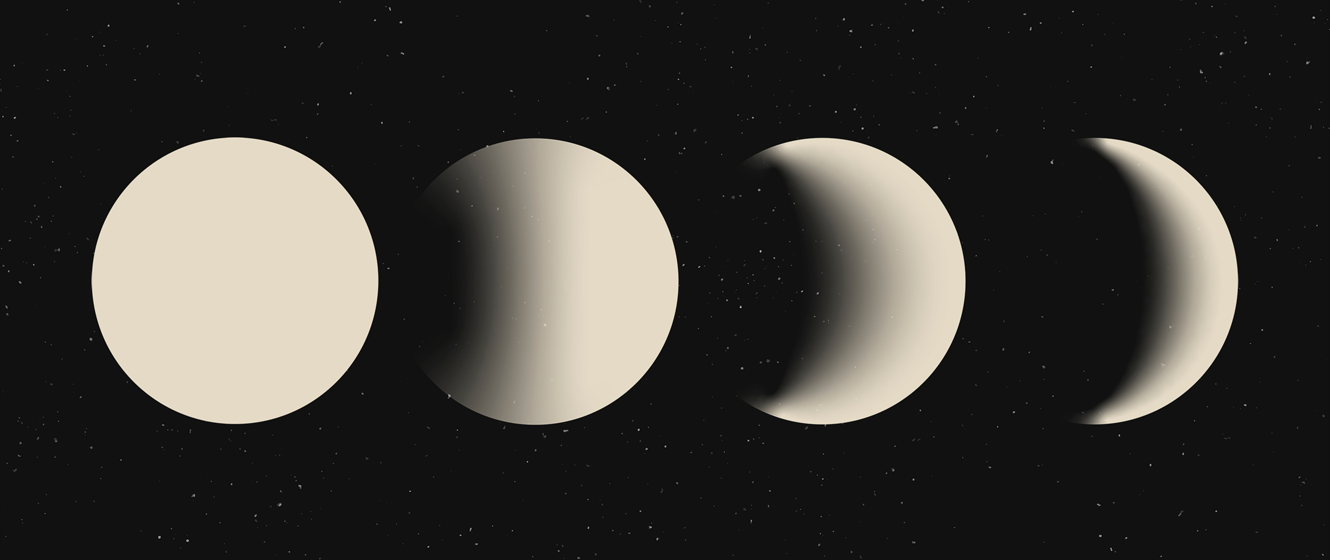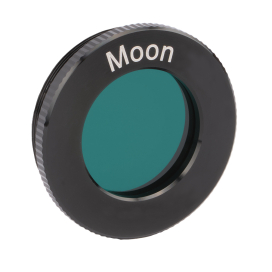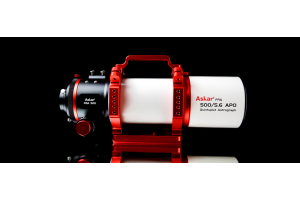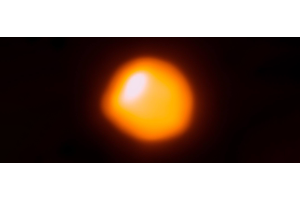
The Moon doesn’t have any light of its own, but (like the Earth) it reflects the light of the Sun. It takes the Moon about 27 days to complete an orbit of the Earth, and as it moves, sunlight strikes its surface. Again, like the Earth, half the Moon’s surface is illuminated by sunlight (its “day” side) while the other half remains in darkness (its “night” side).
The phase of the Moon is determined by how much of the sunlit side we can see from the Earth. For example, when the Moon is new, it’s between the Earth and the Sun. It’s on the sunlit (daytime) side of the Earth, while its own sunlit side is turned away from us. We’re therefore unable to see it in the sky as no part of its sunlit surface is visible to us (not to mention it appears too close to the Sun in our daytime sky).
At the opposite end of the scale, when the Moon is full, the Earth is between the Moon and the Sun. The Moon is then on the nightside of the Earth, with its fully illuminated sunlit side facing us, and as a result, we see a full Moon.
In all, the Moon goes through eight phases and in the following order:
- 1. New Moon
- 2. Waxing Crescent
- 3. First Quarter
- 4. Waxing Gibbous
- 5. Full Moon
- 6. Waning Gibbous
- 7. Last Quarter
- 8. Waning Crescent
New Moon
The New Moon signifies the start of a new lunar cycle. More specifically, it occurs when the Moon is zero degrees away from the Sun in the sky.
Beyond that, the term can also apply to the first appearance of the Moon after it turns new. When this happens, the Moon appears as a thin sliver in the evening twilight after sunset. Depending upon your location and the time of year, this could occur any time from about 15 hours after the Moon turns new.
However, you’ll need to have sharp eyes, know where to look, and be quick! It’ll appear very low over the horizon and will only be visible for a few minutes before it follows the Sun and disappears from view.

Waxing Crescent
You’ll typically see a waxing crescent Moon in the evening twilight from about 24 hours after it turns new. At that time it appears as a very thin sliver, with few features visible on its surface. The Moon is said to be waxing as it moves from new to full and its disc becomes more illuminated.
Besides the crescent, you can also see the remainder of the disc that’s unilluminated by the Sun. Your eyes alone won’t reveal much, but binoculars will show the Moon’s dark features illuminated by a dim, slightly bluish light.
This effect is known as Earthshine, and it’s so-called because the darkened portion of the lunar surface is actually being illuminated by light reflected from the Earth. At this point in its orbit, the Moon is over the sunlit portion of the Earth’s surface. As a result, sunlight is reflected off the Earth and strikes the Moon, illuminating its darkened surface. You can see the same effect on the waning crescent Moon.

First Quarter
About a week after turning new, the Moon reaches the first quarter. Confusingly, this is when the Moon appears as a half Moon in the evening sky, but its name has a more pragmatic origin. At this point, the Moon has completed one-quarter of its orbit around the Earth, and since this is the first completed quarter following the new moon, this phase is called the First Quarter.
The first quarter Moon rises around midday and appears toward the south at sunset, making it visible in the afternoon and evening sky. Like the crescent phases, this is also a great time to observe the Moon with a telescope, as you’ll see a lot of craters casting shadows.

Waxing Gibbous
There are roughly another 7 days between the first quarter and the full Moon, and it’s at this time that the Moon is a waxing gibbous. The midpoint, about 3 or 4 days after the first quarter, is when the waxing gibbous Moon is at its best. To some extent, it might look a little odd at this time - it’s not a half and it’s not full either, so it’ll appear a convex shape instead, with its sides bulging. As time passes, you’ll see its shape become more circular as a greater portion of its surface moves into daylight.
When there are just a few days before the full Moon it can appear almost circular, but if you look carefully you’ll notice it’s still a little misshapen.
The word “gibbous” can apply to both the waxing and the waning Moon. The Moon is in its gibbous phase between the half and full moon. If the Moon is waxing at the time, then it’s known as a waxing gibbous Moon, but if the Moon is waning and between full and half, then it’s known as a waning gibbous Moon.

Full Moon
Full Moon occurs when the Moon is precisely 180 degrees from the Sun in the sky. Like the new Moon, the Moon only occupies this position for a fleeting amount of time, so anything less than 180 degrees is technically a waxing Moon, while anything more is a waning Moon.
That said, most people consider the Moon to be full for about a day or so on either side of the actual date. At this time, the Moon rises at sunset, is highest over the southern horizon at around midnight (or 1 AM if your location is currently observing daylight savings time), and then sets at sunrise.

From Full to New - The Phases in Reverse
After the Moon turns full, it then starts to wane as it moves back toward new again. Essentially, the phases then repeat themselves, but in reverse. The Moon is also now on the morning side of the Earth and will typically rise late in the evening (or after midnight) and be visible in the morning sky before midday.
The first phase after full Moon is therefore the waning gibbous, when the crater Copernicus appears on the terminator.
Next is the last quarter (or third quarter), when the Moon has completed three-quarters of its orbit and is now starting the fourth and final quarter.
In the last quarter, you’ll see a half Moon in the morning sky. It’ll rise at around midnight and then appear toward the south at sunrise before setting at around midday.
Next is the waning crescent. Since the Moon is now moving around to the daylight side of the Earth, this is also a great time to look for Earthshine illuminating the unlit portion of the lunar surface.

Learn More
Interested in learning more about the Moon? Not sure where to begin? Check out our Astronomy Hub to learn more!
This Article was Last Updated on 08/14/2023














